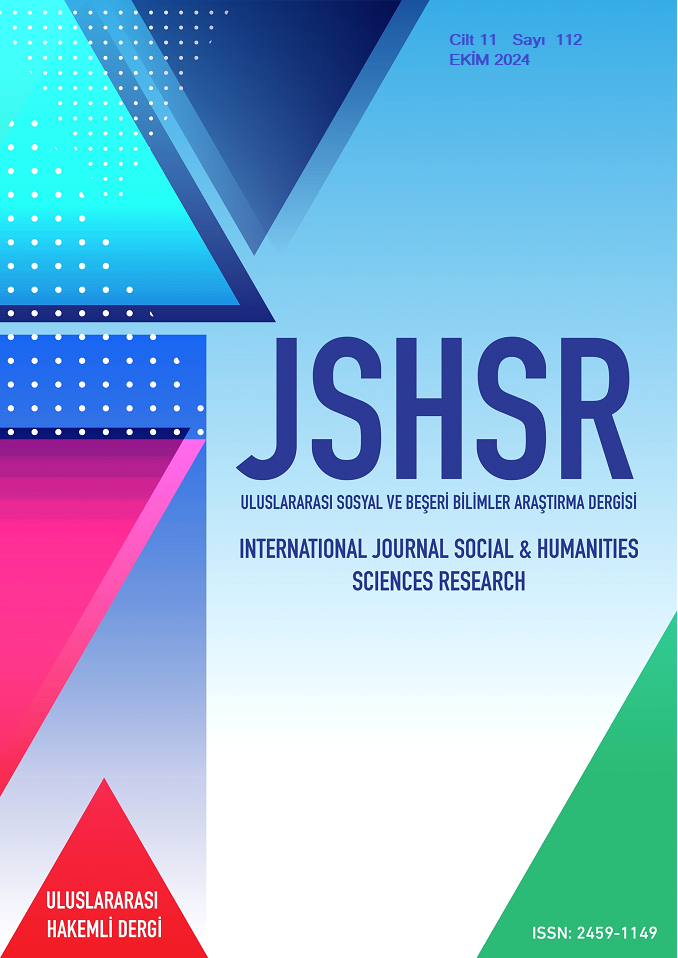Conservative Family Representation in the Media: The Example of Cranberry Sherbet TV Series
DOI:
https://doi.org/10.5281/zenodo.12704598Keywords:
Conservatism, TV Series, FamilyAbstract
The power of the media manifests itself not only in the field of communication but in all areas. TV series and movies published in the media can influence people and change their behavior. The narrative styles that appear in TV series and movies should be prepared considering that people can set an example for themselves. In media communication, television and its contents are ranked first among the most important communication tools. TV series are prepared and influence people's habits or cultural values. Just as there are people who integrate with the characters in the TV series, TV series that reflect a society are also presented. Therefore, the main purpose of the study is to examine the effects of TV series presented in the media on conservative viewers. In the study, a qualitative research was conducted on the Kızılcık Şerbeti series and the effects of the series among conservative viewers were tried to be examined. As a result of the study, it was revealed that the series called Kızılcık Şerbeti contains codes that disrupt the conservative family structure and that there is a negative representation of conservative families and individuals in the series. Additionally, a reception study was conducted for the conservative individuals represented in the series. Another of the results of the study can be stated as one of the results of the study that data can be obtained on how the audience perceives the conservative individuals represented in the series, and therefore how the social perception is guided within the framework of conservative understanding. Another conclusion of the study is that the series and the characters represent the conservative family structure. In addition, it has been concluded that the conservative family men in the series are depicted as disloyal, which is incompatible with the social family structure, and that this situation is inappropriate for both the people who continue their lives as conservatives and the social structure.
References
Adak, N. (2011). Toplumun Temel Yapı Taşı: Aile. Kurumlara Sosyolojik Bakış, (Ed. Sevinç Güçlü). Kitabevi Yayıncılık.
Akdoğan, Y. (2003). Muhafazakâr Demokrasi. Alfa Yayınları.
Akın, M.H. (2012). ‘Türkiye’de Muhafazakarlığın Direnme Odağı Olarak Aile, Muhafazakâr Düşünce/Aile Dergisi, 8(31), 3-20.
Bayraktar, K.F. (2018). İslamda Aile. Diyanet İşleri Başkanlığı Yayınları.
Barry, N. P. (1989). Yeni Sağ. (Çev. Cevdet Aykan). Tisimat Yayınları.
Doğan, Ş. (2015). Muhafazakârlık, Aile ve Kadın (Çankırı Örneği). Afyon Kocatepe Üniversitesi Sosyal Bilimler Dergisi, 17(2), 163-193.
Doğan, Ş. (2016). Dindarlık-Muhafazakâr Aile Değerleri, Araştırma İnceleme Dergisi, 4(7), 159 – 188.
Duman, M. Z. (2012). Toplumda Muhafazakarlık, İnsan ve Toplum Bilimleri Araştırmaları Dergisi, 1(4), 4-46.
Elitaş, T. ve Keskin, S. (2016). Küreselleşme Sürecinde Değişen Geleneksel Türk Aile Yapısının Televizyon Dizilerindeki Temsili. Tarih Okulu Dergisi (TOD), (9), 543-578.
Erdoğan, İ ve Alemdar, K. (2010). Öteki Kuram Kitle İletişim Kuram ve Arastırmalarının Tarihsel ve Eleştirel bir Değerlendirmesi, Pozitif Matbaacılık.
Gittins, D. (2012). Aile Sorgulanıyor. (Çev. T. E.). Pencere Yayınları.
Gökçe, B. (1990). Aile ve Aile Tipleri Üzerine Bir İnceleme, Aile Yazıları I- Temel Kavramlar, Yapı ve Tarihi Süreç, (Der. Beylü Dikeçligil ve Ahmet Çiğdem), T.C. Başbakanlık Aile Araştırma Kurumu Başkanlığı Yayınları.
Lambert, N. M. ve Dollahite, D. C. (2006). How Religiosity Helps Couples Prevent, Resolve and Overcome Marital Conflict, Family Relations, 55 (4), 439-449.
Marczyk, G., DeMatteo, D., ve Festinger, D. (2005). Essentials Of Research Design and Methodology. John Wiley & Sons Inc.
Sarıtaş, E. (2010). Çin Kaynaklarına Göre Hunlarda Evlilik İle İlgili Gelenekler. Doğu Araştırmaları Dergisi, 5, 33-42.
Sayın, Ö. (1981). İnsan Faktörünün Sosyal ve Ekonomik Gelişmelerdeki Yeri ve Önemi. Ege Üniversitesi Edebiyat Fakültesi Yayınları.
Sayın, Ö. (1990). Aile Sosyolojisi. Ege Üniversitesi Basımevi.
Selman, A. (2018). Aile-Din İlişkisi ve Aile İçi Roller, Akademia Sosyal Bilimler Dergisi, 4(1), 13-20
Sezal İ. (1997). Aile Nedir? Başbakanlık Basımevi.
Tezcan, M. (2000). Türk Ailesi Antropolojisi. İmge Kitabevi.
Türkdoğan, O. (2008). Osmanlı’dan Günümüze Türk Toplum Yapısı. Timaş Yayınları.
Ültay, E., Akyurt, H. & Ültay, N. (2021). Sosyal bilimlerde betimsel içerik analizi. IBAD Sosyal Bilimler Dergisi, 10, 188-201.
Downloads
Published
How to Cite
Issue
Section
License
Copyright (c) 2024 INTERNATIONAL JOURNAL OF SOCIAL HUMANITIES SCIENCES RESEARCH

This work is licensed under a Creative Commons Attribution 4.0 International License.


